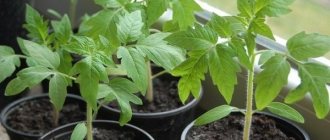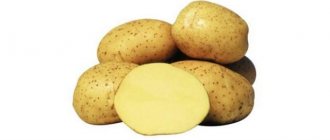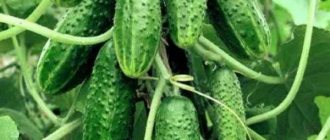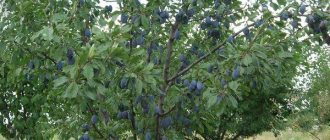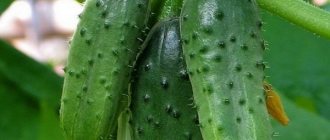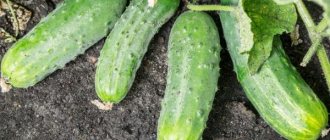Crocosmia, montbretia, tritonia are all names of the same flower, which gardeners also call Japanese or Chinese gladiolus. An unpretentious bulbous perennial plant came to Europeans from Africa.
That flower, which usually pleases the eye in flower beds, was bred through selective breeding by the Frenchman Lemoine. Montbrezia got its name from the name of a French botanist, and crocosmia is translated as “the smell of saffron.”
Indeed, a bouquet of dried crocosmia fills the room with just such a smell.
Montbrecia is an elegant plant with iris-like leaves and spikelets of funnel-shaped stars - flowers of white, yellow, brown, orange or bright red. The arrows of Japanese gladiolus flower growers can be tall and erect, and can smoothly bend between the leaves. The height of the flower spike is from 60 to 150 cm.
The color, height and shape of the inflorescences depend on the variety and variety of crocosmia.
Montbrecia has gained popularity among gardeners due to its long flowering period, which can last from July to September, until the very first frost. Flowers look beautiful in bouquets and remain fresh when cut for up to two weeks.
The bulb of the Japanese gladiolus is small, covered with brown shells. Crocosmia fruits are round capsules with many seeds. You can grow and propagate this flower in your garden by planting corms, plants and seeds.
Growing from seeds
It is easier to grow a plant from seeds if you use the seeding method. For this purpose, prepare containers with soil, which should include peat, sand, turf, and humus. Seeds should be soaked for a day before sowing. For disinfection, you can use a weak solution of potassium permanganate for soaking. After sowing, cover the container with film and place it in a warm, well-lit place.
Important. The time for sowing seedlings is determined in such a way that at least 60 days have passed by the time they are planted in a permanent place. Usually this is the end of February, March.
Planting seeds in open ground
It is not recommended to sow seeds directly on the site. They may not sprout, and if they do, they will be so fragile that they can be suppressed by more powerful plants. Although in the southern regions they still practice sowing directly into the ground. But it is better to do this not immediately in a permanent place, but to allocate a front garden for preliminary germination.
Landing dates
Crocosmia is a heat-loving flower. Therefore, seeds can be sown only when the soil warms up to +6..10°C and there is no threat of spring frosts. The timing of sowing is determined depending on the climate. On average, seeds begin to be sown from late April to early May. Autumn sowing is not practiced.
Choice of location and lighting
The location for the plant is selected based on its needs.
It should be well lit, and no shadows from trees or buildings should fall on it. The site must also be protected from the wind. Important! It is preferable to choose elevated areas where groundwater is as deep as possible. If crocosmia will be grown in a lowland, then you need to arrange in advance reliable drainage to remove excess moisture.
Landing rules
Prepare a small flower bed for sowing seeds. Dig up the soil. Add mineral fertilizers, humus, and compost to it. Make shallow grooves. Water them, distribute the seeds at a distance of about 5 cm between each. Sprinkle with soil, cover with non-woven fiber or film on top. After 4-5 true leaves appear, plant the seedlings in a permanent place.
Rules for caring for gladiolus crocosmia
After the first shoots appear, the film covering is removed and the seedlings are cared for as usual: watering and loosening the substrate. It is important that the soil under the sprouts is constantly moist, but not flooded, otherwise fungal diseases may threaten the seedlings.
Crocosmia pick
Gladiolus crocosmia seedlings are picked, that is, transplanted, into separate pots after the appearance of the third leaf. Before planting in open ground, seedlings are taken outside for a while so that sudden temperature changes do not cause stress.
Planting material
Crocosmia belongs to the corms of the iris family, so many people believe that it reproduces only by bulbs. In fact, it can be propagated by seed and vegetative methods, so in addition to tubers, you can purchase seeds in specialized stores.
Seed propagation
Obtaining montbretia from seeds is a long and not the easiest way. But it does not require large investments and simultaneously provides an unlimited amount of planting material.
Sowing seeds in the ground is not carried out - this will not bring results. They need to be germinated only in closed, heated rooms (in a house or a heated greenhouse).
Seeds are sown in pots no earlier than the second half of February. Before sowing, they must be soaked in moistened cotton wool for 24 hours. It is best to sow in a mixture of peat, humus, coarse sand and turf. After the seedlings sprout and the first true leaf appears on them, they are planted in planting boxes or pots. At this stage, it is important to maintain the optimal watering regime, since excessive moisture can destroy young plants.
When it gets warmer outside, these boxes can be taken out into the open air so that the sprouts gradually get used to being kept outdoors. After the threat of night frosts has passed and the soil has warmed up sufficiently, the seedlings can be planted in the beds. In the summer months she will actively grow tubers.
Montbrecia grown from seeds blooms no earlier than after 3 years.
In the southern regions, young bulbs are left to overwinter outside, covering the beds with a layer of peat, spruce branches or straw. In cold regions, corms are dug up and stored in a cool place after pre-drying. Wooden boxes or paper bags are suitable for storage.
Bulbs
Most gardeners prefer to purchase Montbretia bulbs. This guarantees lush flowering in the first year after planting. In addition, many more varieties and hybrids can be found in bulb form than in seeds.
If someone you know has Montbrecia growing in their garden, then the issue with planting material can be easily resolved: you need to ask for seedlings, which are easily separated when dug up in the fall. It is best to choose those that already have at least one layer of mesh shell: they are more viable.
They spend the winter months in the vegetable section of the refrigerator or in the cellar. Periodically, they need to be ventilated and checked for rot or drying out, discarding moldy corms.
Montbrecia children are planted next spring or summer, but they will bloom only a year later, after they have increased the required mass of the tuber.
Gladiolus crocosmia - planting and care in the garden
Time to board
The right time for planting seedlings in open ground comes when the minimum daily temperatures are no lower than 6 degrees above zero. For the middle zone, this is the end of April - May. The place of permanent residence of the Japanese gladiolus should be an area completely open to sunlight, otherwise the montbretia may not bloom. This plant loves soils in which there is no stagnation of moisture. Constantly wet soil threatens rotting and disease. It is better to prepare a bed for planting crocosmia in the fall. The soil is enriched with humus, lime, phosphate fertilizers and potassium chloride. Nitrogen fertilizers are added in the spring.
Each seedling is placed in a separate hole and watered well. In order for the seedlings to survive transplantation less painfully, you need to make a canopy over it from the sun's rays for 2-3 days.
The optimal distance between holes is 10-12 cm and 25-30 cm between rows.
Planted from seed seedlings, crocosmia does not produce inflorescences in the first year. With good care in a suitable place, flowers can bloom in the second year, usually only in the third.
You may be interested in: When to dig up gladioli in the fall in 2021: the most favorable days for digging up bulbs Dates for planting gladioli in the spring according to the 2021 calendar of gardeners and gardeners Growing gladioli in pots outdoors
Growing
Work on planting and caring for Montbretia in open ground is no different from caring for ordinary gladioli and comes down to weekly abundant watering and loosening the soil after watering, and weed removal as necessary.
If the flowerbed occupies a place on fertile soil, there is no need for additional fertilizing. Poor, infertile soils require additional application of organic fertilizers in solution every 10 days, and potassium fertilizers during bud opening.
Reproduction
Every year, many baby shoots grow around the mother bulb, which begin to flower independently the following year. The old corm does not die, but continues to grow further. Caring for Japanese gladiolus includes periodic division and transplantation of daughter bulbs. The bushes are dug up in the fall, and new planting is done in the spring, at the same time as planting seedlings from seeds. You can first plant the bulb in a pot, germinate it a little, and then transfer it to a flowerbed, carefully, along with a lump of earth.
It is advisable to plant different varieties of crocosmia away from each other to maintain purity of color. Those planted together cross-pollinate and lose their brightness.
Possible pests and methods of controlling them
Perennial Japanese gladiolus is a plant resistant to various types of diseases. However, excessively moist soil, as well as excessive drought and infections brought by insects, can cause some diseases.
- Fusarium. Signs: leaves dry out, flower stalks dry and curl, flower color fades. Control: treatment with fungicides.
- Gray rot. Signs: gray plaque affects the bulb, the plant dies. The reason is waterlogging.
- Jaundice. Signs: the tips of the leaves turn yellow, then the whole plant turns into straw and dies. The cause is a viral infection. Control: affected plants do not regenerate, healthy ones must be transplanted to another place, bulbs and seeds should be treated with potassium permanganate before sowing.
- The main pests of Montbrecia are spider mites, mole crickets and thrips. Control: spraying with chemicals, using traditional methods of control, traps for mole crickets.
How to care for Montbrecia
Montbrecia is easy to care for. In order for the flowers to develop well, it is necessary to regularly water them, fertilize them, loosen the soil and remove weeds.
Watering
The plant requires abundant watering, but stagnation of water should not be allowed, as this can lead to rotting of the corms. If the weather is not too dry, it is enough to water the crocosmia twice a week. In hot weather, increase the frequency of watering to 3 times a week.
Feeding Montbrecia
We feed Japanese gladiolus with complete mineral fertilizer (3 g/1 liter of water) twice a month before flowering. During the budding period, we apply potassium fertilizers (2 g/1 liter of water). Also in the summer we add mullein infusion to the bushes in a ratio of 1:10. We carry out this procedure twice a month. For good ripening of corms, we cut off flower stalks with wilted inflorescences as early as possible.
What to do if roots grow
Each year, each Montbrecia grows about 4-5 children, so it grows in breadth every year. Flowers that have grown greatly and sometimes overwinter (southern regions) in the ground weaken and therefore require regular replanting, on average once every 3 years. Having gone through many options for planting crocosmia and caring for it in the country, we, taking into account our difficult climate with bitter frosts and winds, settled on its permanent placement in the center of the green lawn in a flowerbed of stones. We dig up the varieties of plants we love for the winter, cut off half of the underground parts that have doubled in size during the season, distribute some to needy beauty lovers, and place others in the basement for storage.
Disease and pest control
These flowers are damaged by the same diseases as ordinary gladioli: fusarium (dry rot) and jaundice (grassiness). Affected plants must be destroyed. Montbrecia can be attacked by pests such as thrips and mole crickets. We fight them with appropriate special chemicals.
Preparing Montbrecia bulbs for winter
We begin preparing Montbrecia corms for winter in the fall by digging them up in dry weather. We do this when the crocosmia leaves begin to wither. Shake the plant off the ground, cut off the leaves and stems at a height of 5 cm from the tubers. Before storing the bulbs, dry them for several days. Japanese gladiolus tubers do not need to separate the roots and shake off the soil from them. We sort the bulbs and children by size and variety. We place them in wooden boxes or thick paper bags and lightly sprinkle them with dry soil.
Crocosmia after flowering
Collecting seeds
Ripe crocosmia seeds are large and yellow-brown in color. After ripening, the seed pods are collected and stored in a dry place. It is best to propagate Chinese gladiolus, which is already growing in the garden, using the vegetative method. And if you really need seeds, it is better to purchase them in a store to avoid infection and cross-pollination.
Preparing for winter
Japanese gladiolus is a perennial; in regions that are not threatened by severe winters with freezing of the soil, crocosmia is not dug up. The bushes are pruned and mulched with compost, sawdust, and spruce branches. In the southern regions, it is enough to cover with leaves and film.
Many gardeners believe that Montbretia is preserved better in the ground than when dug up. When covered tightly, the plant tolerated thirty-degree frosts well. But once every three to four years, digging needs to be done; thick planting leads to crushing and degeneration of flowers.
Species and varieties of interest for floriculture
The genus includes about 55 species. The first hybrid was obtained by crossing Crocosmia Potts and golden, receiving the name Montbrezia vulgaris. It has a thin branched meter-long stem and medium-sized funnel-shaped flowers of red-yellow shades. It blooms in July, the peculiarity of the inflorescences is multi-colored; up to 10 flowers can be present in one inflorescence at the same time.
Numerous following cultivars are bred on the basis of this particular hybrid. Most crocosmias grow in the wild; mainly four varieties are used in culture:
K. aureus is one of the largest-flowered. It got its name for the bright yellow-orange color of its flowers. Tolerates some shade as it is a forest plant. It blooms only in autumn. Grown for cutting. It is thermophilic, does not overwinter, grows well in closed ground.
Graceful inflorescence of Montbrecia
K. Potsa - small-flowered, with smooth narrow leaves. Moisture-loving, light-loving, successfully adapts to unfavorable conditions. Natural forms are practically never found on plots and in gardens, but numerous hybrid forms are quite resilient and grow well.
K. massonorum - characterized by increased frost resistance, sword-shaped corrugated leaves, small flowers and large bulbs. It blooms in mid-summer, blooms profusely and for a long time. Reaches a height of 80 cm.
K. paniculata is a frost-hardy mountain variety with ruffled leaves and small, bright orange flowers that open in early summer.
Numerous varieties and hybrids are mainly cultivated, artificially bred on the basis of natural varieties. There are about 400 cultivars, the most common colors are yellow, orange, red, white and pink flowers are less common.
Types of crocosmia
In total, nature has created about 50 species and 400 cultivars of crocosmia; the following varieties are most often used for cultivation in garden beds:
- Emily McKenzie is a late flowering variety. The flowers are orange-brown with a bright center. The height of the bushes is up to 60 cm.
- Lucifer is a frost-resistant variety, up to one and a half meters high. Straight peduncles with very bright red flowers.
- George Davidson is the most suitable variety for cutting. The flowers are large, bright yellow. Height – up to 70 cm.
- Star of the East is a variety with large, up to 10 cm in diameter, beautiful flowers, apricot color. Disadvantage: poor frost resistance; requires digging up for the winter.
In areas with low temperatures, where the number of sunny days is small, low-growing species of crocosmia are grown in greenhouses for cutting, or as a potted plant.
Description
Crocosmia (lat. Crocosmia) represents the iris family. This herbaceous corm plant is a hybrid of African origin, bred in the 19th century by the French breeder Lemoine.
Narrow light green sword-shaped leaves form lush tufts. Ground leaves are much shorter than the erect branched stem. Thin flower stalks branch from the ground and reach a height of up to 1.5 m. The first buds appear in June-July. It blooms with a cluster of graceful funnel-shaped flowers in white, pink, tan and orange-red.
Crocosmia - miniature gladiolus
The flowers are star-shaped, expanded, up to 5 cm in diameter. They are collected in a dense panicle with a horizontal bend. Flowering is abundant and long lasting. The arrows of the peduncles are erect or curved, repeating the shape of the elegant leaves.
The fruit is a multi-seeded capsule. The seeds are large, brown with a reddish tint. The corms are usually small, covered with several netted brown shells, reminiscent of gladioli corms. From one unit up to 4 peduncles grow.
Reviews from flower growers
For flower growers in Eastern Europe, crocosmia has not yet become a familiar flower, due to the paucity of information and knowledge on how to care for it. But increasingly, Japanese gladiolus is becoming a bright decoration of garden areas, ridges, and alpine slides. Those who have hosted a European guest note the extraordinary beauty of group plantings, original bouquets, and the opportunity to use dry plants in room design.
Disadvantages include the poor cold resistance of some varieties and the need to dig them up for the winter.
Diseases, pests and ways to combat them
Crocosmia is quite resistant to diseases and pests. When the soil is over-moistened, gray rot may appear and, first of all, the bulbs are damaged. For prevention, you need to follow the watering regime.
Montbrecia is affected by diseases characteristic of gladioli:
- Fusarium - manifested by progressive yellowing of leaves, which leads to the gradual death of leaves and drying of the entire plant. In infected plants, the stems and peduncles are bent, the size, shape, and color of the flowers change.
- Herbaceousness or jaundice - yellowing of the tips of the leaves gradually spreads, the leaves become straw-like, and the plant dies. The disease is transmitted by cicadas. Heat treatment of weakly affected bulbs for half an hour at 45 C almost completely destroys the pathogen.
Crocosmia - elegant and tasteful
The main pests are:
- Mole crickets that damage roots, bulbs, and stems; as a result, rot may appear and develop on them. They lead an underground lifestyle on predominantly moist soils.
- Thrips - can parasitize the plant both during storage and during growth.
- Sometimes crocosmia are attacked by spider mites.
Special mole cricket repellers are used; pest control consists of spraying with preparations against these pests in the required dosage specified by the manufacturer.
Crocosmia decorates fences, walls, gazebos


